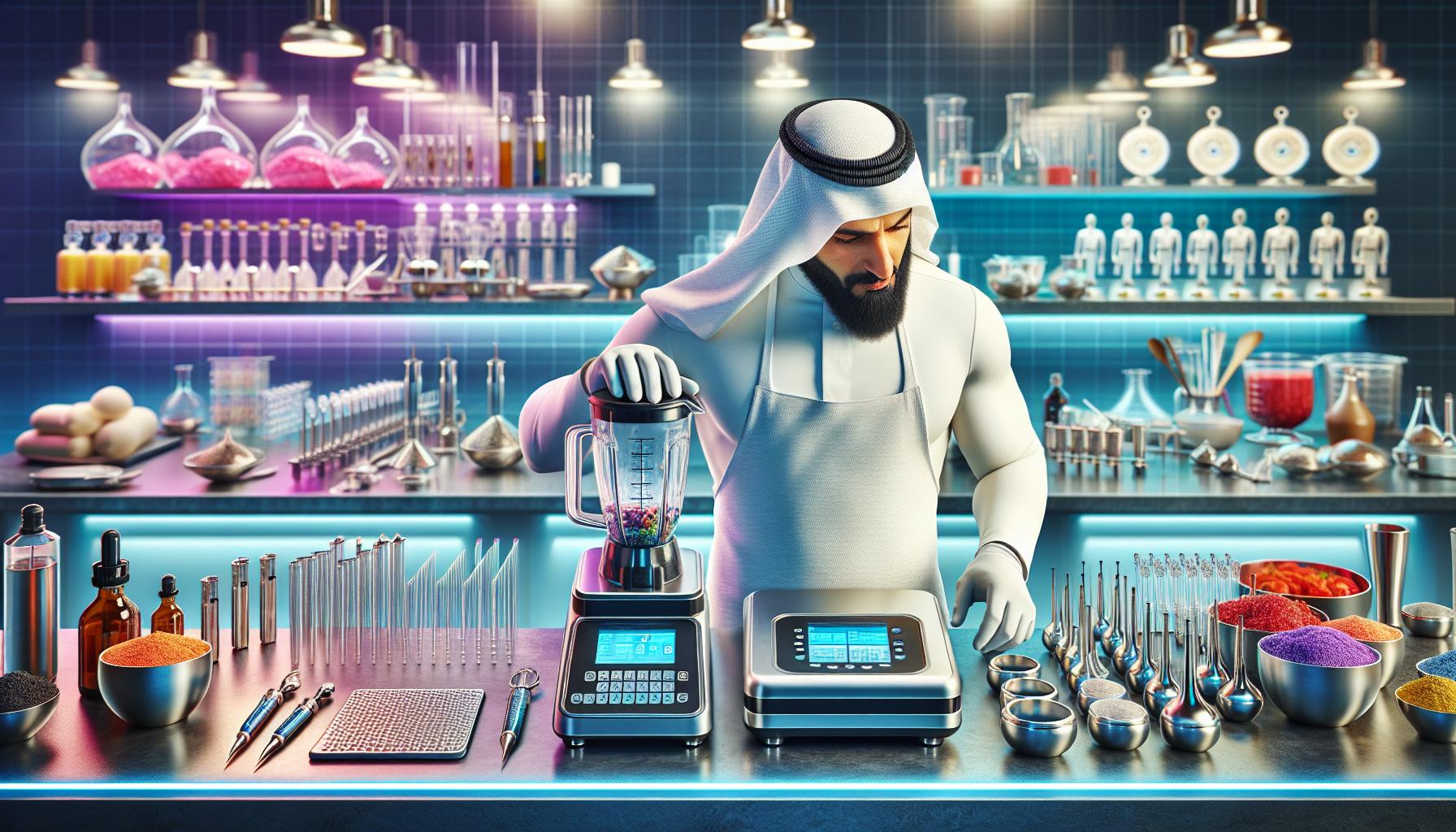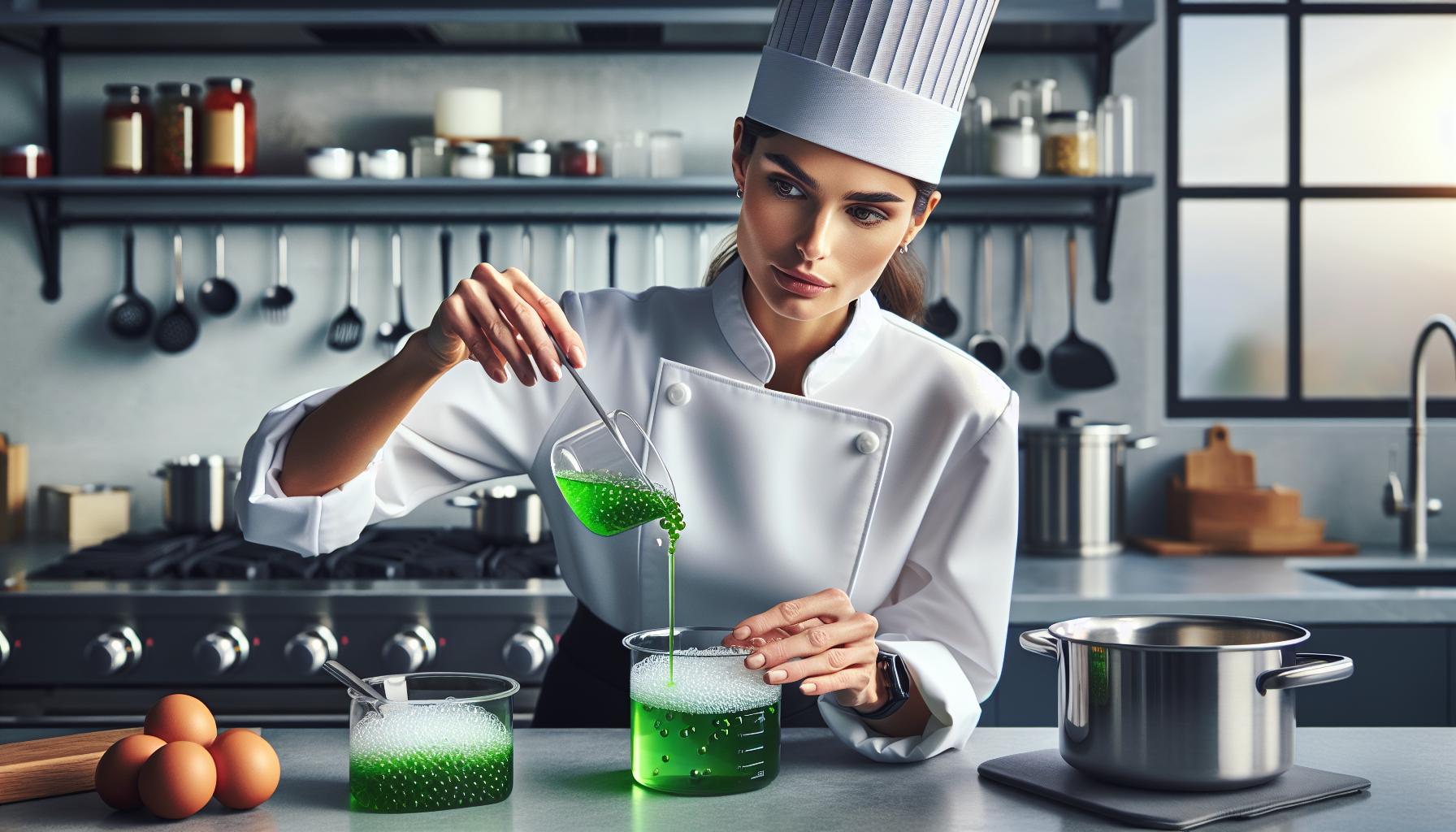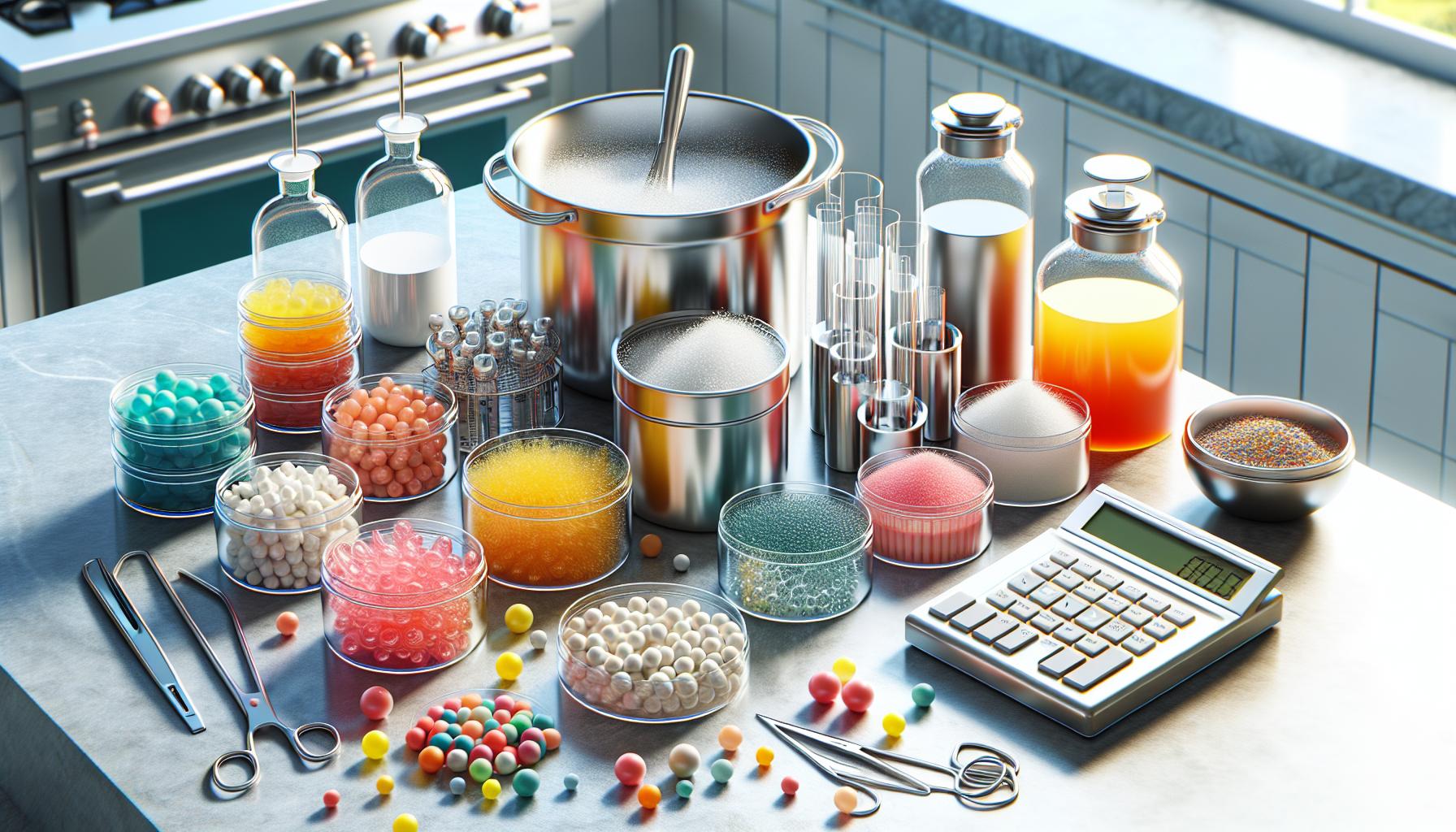Molecular gastronomy isn’t just about turning dinner into a science experiment – it’s where culinary arts meet chemistry to create mind-bending dishes that challenge everything we know about food. From floating desserts to edible bubbles these innovative cooking techniques are transforming ordinary ingredients into extraordinary experiences.
As professional chefs and home cooks embrace this cutting-edge approach they’re discovering a whole new world of textures flavors and presentations. By using specialized equipment and techniques like spherification liquid nitrogen and sous vide cooking anyone can learn to manipulate food at its molecular level. It’s not rocket science – but it’s pretty close and it’s revolutionizing modern cuisine one molecule at a time.
Molecular Cooking Techniques
Molecular gastronomy combines scientific principles with culinary techniques to create innovative dining experiences. This discipline explores the physical and chemical transformations of ingredients during cooking.
Science Behind Molecular Cooking
Molecular cooking relies on chemical reactions to manipulate food textures flavors and presentations. The process involves techniques like spherification which uses calcium chloride to form liquid-filled spheres emulsification for creating stable mixtures of normally immiscible liquids and gelification to transform liquids into gels. Temperature manipulation plays a crucial role with methods like flash-freezing at -196°C using liquid nitrogen and precise temperature control in sous vide cooking at 55-85°C. These techniques alter food properties at the molecular level creating unique textures aromas and visual presentations.
Key Pioneers and Innovators
Nicholas Kurti a physicist from Oxford University introduced scientific principles to cooking in 1969 through his groundbreaking presentation “The Physicist in the Kitchen.” Hervé This a French physical chemist established the foundation of molecular gastronomy through systematic studies of culinary transformations. Chef Ferran Adrià revolutionized modern cuisine at his restaurant El Bulli by introducing techniques like foams spherification and liquid nitrogen applications. Heston Blumenthal advanced the field by combining scientific research with historical gastronomy at The Fat Duck creating signature dishes like bacon ice cream and snail porridge.
Essential Tools and Equipment

Molecular cooking requires specific tools to execute precision techniques. The right equipment enables chefs to create innovative dishes through chemical reactions and temperature manipulation.
Basic Kitchen Tools
A digital scale measures ingredients with 0.1-gram accuracy for consistent results in molecular recipes. A high-powered blender processes ingredients into smooth purees essential for foams and emulsions. Three sieve sizes (fine, medium, coarse) separate particles for uniform textures. An infrared thermometer monitors exact temperatures during spherification processes. Food-grade pipettes transfer precise amounts of liquids for controlled reactions. Silicone molds create uniform shapes for gels and mousses. A hand-held immersion blender incorporates air into solutions for stable foams.
Specialized Molecular Equipment
A vacuum sealer creates airtight packages for sous vide cooking at controlled temperatures. An anti-griddle flash-freezes ingredients at -30°F (-34°C) for unique textures. The Smoking Gun infuses foods with cold smoke flavors in minutes. A dehydrator removes moisture at low temperatures to create crispy garnishes. Liquid nitrogen storage tanks maintain temperatures at -320°F (-196°C) for instant freezing. A rotary evaporator distills flavors at low temperatures to concentrate essences. The iSi whipping siphon creates foams through nitrous oxide pressurization. pH meters ensure optimal conditions for spherification reactions.
Popular Molecular Cooking Techniques

Molecular cooking techniques transform ordinary ingredients through chemical reactions to create innovative culinary experiences. These methods combine scientific principles with traditional cooking to produce unique textures flavors.
Spherification Process
Spherification creates liquid-filled spheres that burst in the mouth. The process involves combining sodium alginate with a flavored liquid then dropping the mixture into a calcium chloride bath. Basic spherification produces caviar-like pearls such as mango caviar fruit juice spheres or olive oil pearls. Reverse spherification works with calcium-rich liquids like dairy products creating larger spheres with thicker membranes. Professional chefs use specific ratios: 0.5% sodium alginate solution for basic spherification 2% calcium lactate for reverse spherification. Temperature control at 4°C (39°F) ensures optimal sphere formation.
Gelification Methods
Gelification alters food textures using hydrocolloids to create gels foams spaghetti. Common gelling agents include agar-agar carrageenan gelatin. Agar-agar creates firm gels at 0.9% concentration sets at 35°C melts at 85°C. Carrageenan produces elastic gels at 0.3% concentration ideal for dairy-based preparations. Hot gelification requires heating solutions to 80°C while cold gelification occurs at room temperature. Applications include wine gels herb spaghetti vegetable custards. Texture variations depend on agent concentration temperature pH levels.
Liquid Nitrogen Applications
Liquid nitrogen revolutionizes flash-freezing techniques at -196°C (-320°F). Chefs create instant ice creams frozen mousses shattered herbs. The rapid freezing forms micro-crystals producing smoother textures than conventional freezing methods. Applications include creating frozen powders like olive oil dust chocolate soil. Safety protocols require proper ventilation insulated containers protective gear. Dosage ratios include 1:4 liquid nitrogen to base mixture for ice cream 1:2 for mousses. The instantaneous freezing preserves flavors while creating dramatic presentation effects.
Common Ingredients in Molecular Cooking

Molecular cooking relies on specialized ingredients that facilitate chemical transformations of food. These ingredients enable chefs to manipulate textures, create unique presentations, and enhance flavors through precise molecular interactions.
Gelling Agents and Stabilizers
Hydrocolloids serve as primary gelling agents in molecular gastronomy applications. Agar-agar creates firm gels at 0.2% concentration and maintains stability at room temperature, while carrageenan forms elastic gels at 0.3% concentration. Here are key gelling agents:
- Gellan: Forms transparent gels at 0.4% concentration with distinct snap
- Methylcellulose: Creates gels when heated above 50°C (122°F)
- Xanthan gum: Stabilizes foams at 0.1% concentration
- Pectin: Forms soft gels in acidic conditions pH 2.8-3.5
Emulsifiers and Additives
Chemical emulsifiers enable the creation of stable mixtures between normally incompatible substances. Lecithin binds water-based liquids with fats at 0.5% concentration, creating smooth emulsions. Essential additives include:
- Sodium alginate: Forms spheres through calcium reactions
- Maltodextrin: Transforms liquids into powders at 60% concentration
- Calcium lactate: Triggers spherification at 0.5% concentration
- Transglutaminase: Bonds proteins at 1% concentration for restructuring
- Citric acid: Adjusts pH levels for optimal reactions
Each compound requires precise measurements in grams or percentages for successful molecular transformations.
Safety Considerations and Best Practices
Molecular cooking requires strict adherence to safety protocols due to its use of chemical compounds and extreme temperatures. Personal protective equipment includes safety goggles, heat-resistant gloves, and appropriate lab coats when handling liquid nitrogen or chemicals.
Safe storage practices involve:
- Keeping chemicals in original containers with clear labels
- Storing reactive ingredients separately in temperature-controlled environments
- Maintaining airtight containers for moisture-sensitive compounds
- Organizing ingredients by type to prevent cross-contamination
Essential workspace safety measures include:
- Installing proper ventilation systems
- Setting up designated areas for chemical handling
- Placing eye wash stations nearby
- Using non-reactive stainless steel surfaces
- Maintaining fire suppression equipment
Temperature control protocols require:
| Method | Safe Temperature Range | Maximum Exposure Time |
|---|---|---|
| Liquid Nitrogen | -196°C to -190°C | 30 seconds |
| Deep Freezing | -20°C to -18°C | 48 hours |
| Sous Vide | 55°C to 85°C | 4 hours |
Chemical handling guidelines emphasize:
- Measuring ingredients with precise digital scales
- Following exact dosage ratios for additives (0.5% to 2% by weight)
- Testing pH levels before combining reactive ingredients
- Using food-grade chemicals exclusively
- Documenting all experimental procedures
Emergency response procedures include:
- Immediate access to safety data sheets
- Clear evacuation routes
- First aid protocols for chemical exposure
- Spill containment procedures
- Emergency contact information displays
These safety measures protect both practitioners and consumers while ensuring successful molecular gastronomy experiments.
Famous Molecular Dishes and Recipes
El Bulli’s Liquid Olives transformed spherification into an iconic molecular dish. These olive-flavored spheres create an explosion of Mediterranean flavors when consumed.
The Chocolate Sphere Dessert by Heston Blumenthal features a hollow chocolate sphere that melts dramatically when hot caramel sauce pours over it, revealing hidden ingredients inside.
Grant Achatz’s Edible Balloons float above the table, filled with helium flavored air showcasing molecular gastronomy’s playful side.
Popular molecular recipes include:
- Mango Caviar Pearls: Combining mango puree with sodium alginate creates spherical beads that burst with tropical flavor
- Mint Foam: Stabilizing mint-infused liquid with soy lecithin produces light ethereal foam
- Frozen Nitro Meringues: Flash freezing meringue drops in liquid nitrogen creates crispy shells with soft interiors
- Gel Noodles: Using agar agar to form translucent strands from fruit juices
- Smoke-Infused Cocktails: Capturing wood smoke in glasses using smoke guns
Signature restaurant creations showcase advanced techniques:
| Restaurant | Dish | Key Technique |
|---|---|---|
| Alinea | Floating Sugar Balloon | Sugar blowing with helium |
| The Fat Duck | Sound of the Sea | Multi-sensory presentation |
| Mugaritz | Edible Stones | Clay coating technique |
| wd~50 | Deep Fried Mayonnaise | Gelification |
| minibar | Olive Oil “Bon Bon” | Reverse spherification |
These innovative dishes demonstrate how molecular gastronomy transforms familiar ingredients into unexpected culinary experiences through precise scientific techniques. Each creation combines artistic presentation with carefully controlled chemical reactions to produce unique flavors textures.
Explore New Culinary Horizons
Molecular gastronomy stands at the forefront of culinary innovation blending science with artistry to redefine modern cuisine. This revolutionary approach has transformed traditional cooking into an exciting laboratory of flavors textures and presentations.
The continuous evolution of molecular cooking techniques empowers both professional chefs and adventurous home cooks to explore new culinary horizons. With proper tools safety protocols and understanding of chemical reactions anyone can venture into this fascinating world of gastronomic experimentation.
As this field continues to grow it promises to push the boundaries of what’s possible in the kitchen while inspiring future generations of innovative chefs and food enthusiasts. The fusion of scientific precision with creative expression ensures that molecular gastronomy will remain a driving force in culinary advancement.

